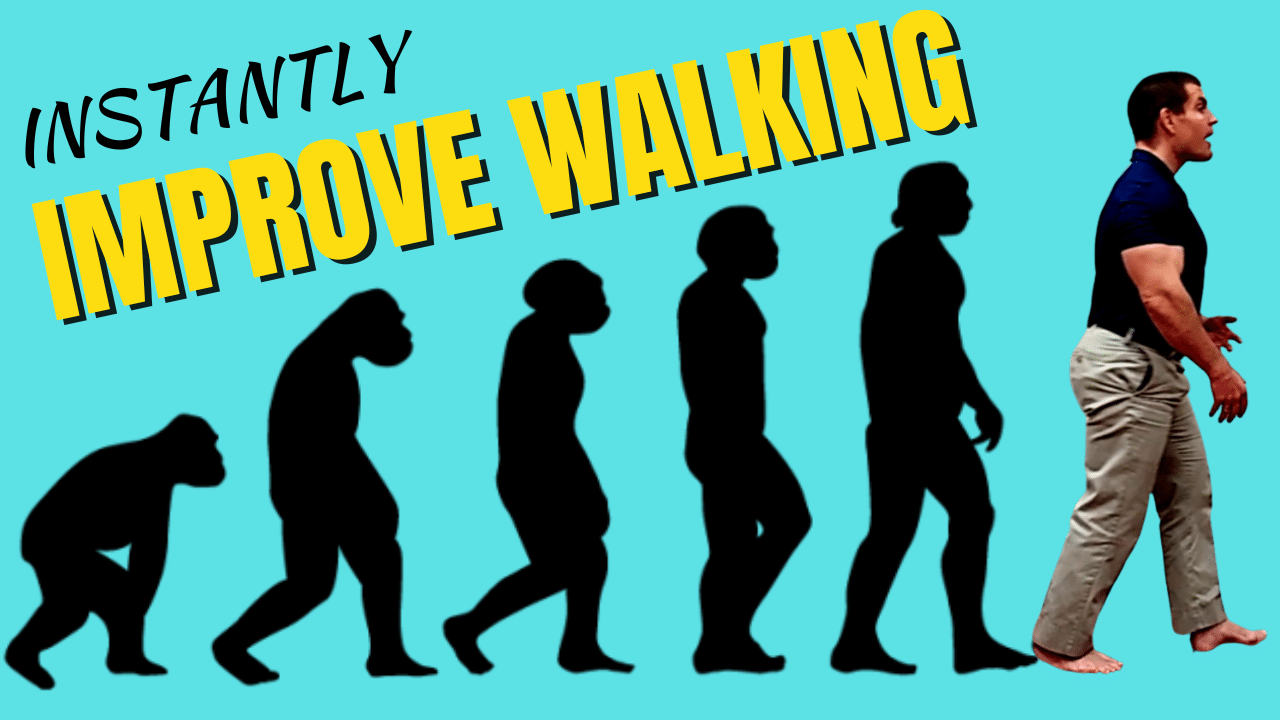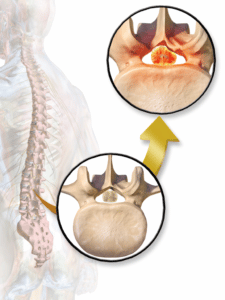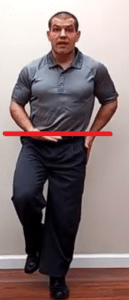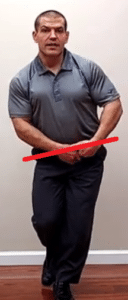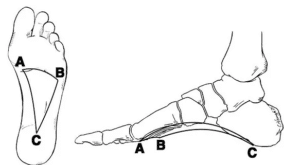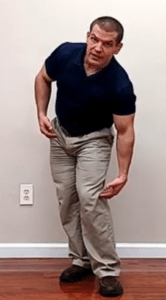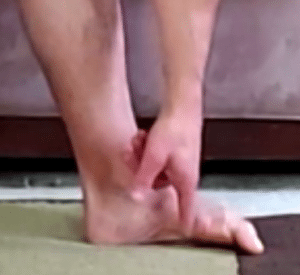Want To Improve Your Walking Gait So That You Can Walk Farther With Better Balance And Less Pain?
Walking is one of the most common activities that we do as humans. Therefore, when you're having a problem with your walking, it can be extremely disruptive to your lifestyle.
Watch the video to learn how to improve your gait nearly instantly without having to take extra time to do exercises. As a bonus, these tips will help you walk without back, hip, knee, or foot pain as well.
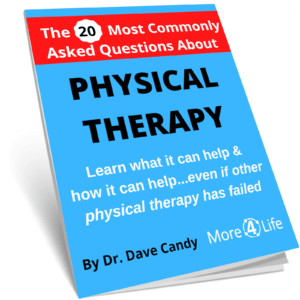
Humans Walk A Lot
If you're a really sedentary person, you may only walk 1000 steps per day.
But if you multiply that over the course of a year, that's still 365,000 steps per year.
If you're more active and you're hitting your 10,000 steps per day goal, that's 3.65 million steps per year.
That's a lot of steps!
If you round that to two to three million steps per year and multiply it over the course of 50 years, that's a hundred million to 150 million steps.
That's a lot of time to practice either good walking habits or bad walking habits.
That's the reason why people over the age of 50 have little nagging problems that start to come up seemingly without reason.
It's not one thing or one injury that happens, and it's not even that you've changed anything.
It's small little things adding up over the course of 100 million to 150 million steps.
Those little problems add up into a really big problem such as:
But by improving your walking gait pattern, you'll be able to walk faster with better balance and less pain.
3 Tips To Instantly Improve Your Walking Gait
By following these three simple tips to improve your walking, you'll be able to walk easier with less pain.
1. Lean Forward When Walking
The first tip is just leaning forward more when you're walking.
If you remember Newton's First Law of Motion, it states that an object in motion will stay in motion, and an object at rest will stay at rest.
So when you're standing (at rest), you've got your body weight aligned over top of your feet.
But in order to walk in a forward direction, you have to overcome your inertia and create forward momentum.
Leaning forward can help you do that.
Then to continue walking, you have to keep that momentum going forwards.
Common Gait Problem: Walking Too Upright
If you're walking too upright with your foot out in front of you, you're basically doing serial standing.
Essentially that means you're standing still in one location. Then you're standing still in another location. Then you're standing still in a third location, etc.
You having to overcome that inertia every time you take a step.
So you never really get that forward momentum going, and that's really energy inefficient.
Leaning forward can also help you walk more comfortably if you have spinal stenosis or degenerative disc disease in your lower back.
When you're walking really upright like that, that compresses the joints in your lower back together.
It also narrows the spaces around the nerve roots and spinal cord in your lower back.
That in turn can increase your back pain or even cause pain to go down your leg when you're walking.
However, if you lean forward slightly when you're walking, that opens up the spaces where the nerves come out and the spaces between the joints in your back, so you can walk with less back pain.
So that's the first tip, to lean forwards when you're walking.
If you're concerned that leaning forward when walking will make you look like a hunchback, make sure to read these two posts:
3 Exercises to Stop Walking Hunched Over
Kyphosis with Lordosis Curve of the Spine: Causes & Treatment
2. Push Off Using Your Glutes When Walking
Once you start to lean forwards, you're going to have to take a step and push off your rear foot in order to get your momentum going forward.
You don't want to pull forwards with your front foot.
If you're doing that, not only does it stop your forward momentum, but it causes you to walk too upright.
Once you lean forwards, you want to push off using your glutes to create your the forward momentum to go on to take the next step.
So, every time you go to take a step, your momentum is going forwards, and you're using your glute, followed by your calf to continue that forward momentum.
Improve Balance When Walking
An additional advantage to using your glute muscles is that it helps keep your pelvis balanced.
Your gluteus maximus or your butt muscle is the muscle that produces hip extension that helps propel you forwards.
But when you activate your glutes, you also activate the gluteus medius and gluteus minimus muscles that help keep you balanced side-to-side.
When your pelvis drops out to the side when walking, that can create IT band hip pain, back pain, inner knee pain or outer knee pain.
So using your glutes helps keep your body in better alignment when you're walking.
So, that's the second tip to improve your walking gait: pushing off using your glutes.
3. Walk With A Mid-Foot Strike With Your Arch Domed
The third way to improve your walking has to do with how your foot hits the floor.
As I mentioned before, when you hit with your heel, that slows down your momentum.
It's literally like stepping on the brakes.
So, instead of keeping you forward momentum going and walking effortlessly, you have to continuously overcome inertia.
Instead of hitting with a heel strike, you want to actually hit and land so that your heel and the ball of your foot hit the ground at the same time.
If you're following the first two tips by leaning forward and pushing off your glutes, you're almost naturally going to land on your midfoot with your body centered over top of your front foot.
Then you just push off your glutes and you keep that momentum going so that you roll through your step effortlessly.
Improve Shock Absorption When Walking
An additional advantage of landing on your midfoot is that it helps absorb shock better.
The arch of your foot is made to be a natural shock absorber.
Actually, you don't just have one arch in your foot, you have three arches:
- along the inner edge of your foot,
- along the outer edge of your foot,
- across of your foot
Together, those three arches help absorb the pressure when your foot hits the floor so that force doesn't get transmitted up through your knee, hip, or back.
Conversely, when you hit with your heel, that transmits all the ground reaction force up your leg. In turn, you may notice problems in wherever the weakest link in the chain may be, whether that be your knee, hip, or your back.
Yet another advantage to hitting with your midfoot and having your arch dome is that it also helps you maintain your balance in the frontal plane.
Keeping your arch domed prevents your knee from collapsing inward.
Slightly doming your arch and gripping the ground with your foot, that helps you maintain your ankle, knee, and hip in good alignment.
That way when you do go to take a step, you're not caving in and creating knee problems, hip problems, or back problems.
Conclusion
Those were the three simple tips that you can use to improve your walking nearly instantaneously. And just to review them, the three tips were:
- Lean forward until you have to take a step.
- Push off your glutes.
- Land on your midfoot with your arch domed.
When you string those together over and over and over, you're able to walk effortlessly with less hip pain, knee pain, foot pain, or back pain.
So you found these tips helpful.
If you need more help to be able to be able to walk better with less pain, we'd be happy to help you at More 4 Life. Just tap the button below to request an appointment with one of our specialist physical therapists.

